Home » Articles posted by Tessa Sanderson (Page 7)
Author Archives: Tessa Sanderson
Randall-Reilly acquires data assets from Informa
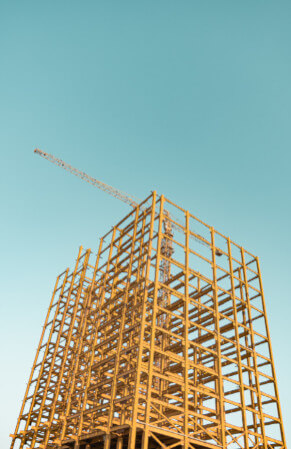
Randall-Reilly, Equipment World’s parent company, has acquired Informa’s Asset Intelligence Business unit, comprised of Equipment Watch, Price Digests and FleetSeek.
The trio of brands provide proprietary pricing data, information and insights to businesses making decisions and investments in heavy construction equipment, commercial vehicles and other infrastructure assets.
“Strategically, these highly regarded brands really help us advance our progress toward being the go-to source for pricing and analytics in America’s most vital industries,” says Matt Reilly, president and CEO of Randall-Reilly. “They’re a perfect complement to our equipment market intelligence platforms, EDA and Rig Dig, and equipmentexperts.com, our performance-based used equipment marketplace.”
Equipment Watch is a leader in construction equipment valuation and operating cost data to contractors and state DOT’s. Price Digests is a top provider of commercial truck information and valuation data to insurers and others along the commercial vehicle value chain. FleetSeek is a database of 500k carriers with market intelligence used by trucking product and service providers.
“We wish the Asset Intelligence team continued success under their new ownership,” says Simon Ferguson, president at Informa Intelligence. “They have much to be proud of, and we are confident that Randall-Reilly will fuel further growth for these industry-leading brands.”
“Adding these insights to our existing platforms means no other company better understands heavy equipment buyer behavior and risk profile, than Randall-Reilly,” says Prescott Shibles, EVP & Division GM of Randall-Reilly.
Randall-Reilly is a leading data, pricing and analytics platform for transportation, construction, agriculture and other industrial markets.
Did you miss our previous article…
https://constructionosa.org/?p=1031
Topcon MC-Max offers an affordable, portable solution for mixed fleets

Machine data is more useful when it can be pulled together for analysis and viewed across a mixed-fleet worksite, and that’s the thinking behind Topcon’s new MC-Max platform.
Designed to adapt to contractors’ machine control and data integration needs as their fleets and workflows expand, the new Topcon MC-Max increases processing power, speed, accuracy, reliability in GPS/GNSS guided earthmoving and sitework, says the company.
Backed by Sitelink3D, MC-Max can be installed on a full range of dozers and excavators. The MC-Max is based on Topcon’s MC-X platform and offers flexible mounting solutions, as well as optional automatic blade and bucket control. The system also provides a full range of positioning technologies from slope control to laser, multi-constellation GNSS*, robotic total station and Millimeter GPS systems. With it, you get a live view of machine positions, activities and onsite progress. MC-Max is also compatible with a wide range of jobsite communication systems.
“With MC-Max, we’ve created a solution that is flexible and can continue to grow as a contractor’s needs and capabilities expand,” says Jamie Williamson, executive vice president, Topcon Positioning Group. “This new solution provides improved scalability and precision in the field and offers business owners real-time data integration, connectivity and resource management capabilities across their entire workflow.”
Topcon positions the MC-X Platform as an easy-to-use and affordable machine control solution. The platform provides seamless data with mixed fleets by interacting with multiple versions of 3D-MC. Sitelink3D is the company’s real-time, cloud-based data management system.
*Multi-constellation GNSS systems are machine control platforms that receive positioning signals from multiple satellites in orbit around the earth. The more satellites a system can “see” the better the data and the less likely a system will lose the satellite connection.
Did you miss our previous article…
https://constructionosa.org/?p=1028
Cat intros 8-foot pavers for smaller, tighter jobs
To the contractors asking for a compact paver from Caterpillar: your wish has been granted.
Cat has filled the gap in its product offering with a new line of 8-foot size-class paver and screed combinations. The AP400, AP455, AP500 and AP555 asphalt pavers, along with the SE47 V and SE47 FM asphalt screeds, are designed for small, tight jobs such as narrow streets, driveways and small parking lots.
“Compact pavers and screeds offer opportunity to both large and small contractors,” says Cat sales consultant Jon Anderson. “For large contractors doing pullouts and shoulders, this is the perfect machine for that at a lower cost point. For smaller customers, it gives them the opportunity to move up and do some bigger jobs that they’ve always wanted to bid on but didn’t feel they had the equipment for.”
The SE47 V screed can be extended to any width between 8 and 15 feet 6 inches, with a maximum width of 20 feet. The SE47 FM screed offers a standard paving range between 8 feet and 15 feet 6 inches, with a maximum width of 20 feet 6 inches. Both screeds offer paving depths up to 10 inches.
“One of the hardest things is to do a job where the paver is too big and you’ve got to do everything at the very minimum width,” says Anderson. “It’s a real challenge, so this provides new opportunities.”
Easy to load or road
When moving between multiple jobs per day, equipment must be easy to haul. Cat says these 13- to 15-ton size-class machines don’t require special permits for transport and have convenient tie-down locations.
With a length of less than 18 feet 6 inches and width of 8 feet 6 inches, the pavers easily fit on trailers and can be hauled with other equipment. In addition, the front-loading angle of 17 degrees and high bumper clearance simplifies loading without the need for additional blocking material.
Roading it rather than loading it? Anderson says the versatile undercarriage design delivers “excellent traction and speed for traveling to the next starting point.”
The Cat Mobil-trac undercarriage design used on the AP455 and AP555 features a unique four-bogie system with self-tensioning accumulators and center guide blocks. This helps prevent slippage and reduce wear, while the oscillating bogie wheels help deliver smooth transitions when exiting the cut over transverse joints of mill and fill applications.
A simple wheel undercarriage design is also available with sand-rib or radial drive tire options. The AP400 can be equipped with a front-wheel assist option, while the AP500 can be equipped with front-wheel assist or the all-wheel drive option for increased performance on soft base materials or when pushing heavy loads.
Simple, intuitive operation

Simplified menu structures offer touch-screen activation from the main screen.Equipment WorldStandardized controls across the Cat paving product line make it easier to move crew members between machines and train new hires.
“We have some new, simplified menu structures that make it easier to make changes and a single-touch activation for the feeder system,” says Anderson. “The new display has fantastic visibility even in bright sunlight.”
The screed heat, fumes ventilation, vibration settings and the washdown system are all accessible with the touch of a button from the main menu, helping operators start faster and increase productivity.
Versatile new screeds
Screeds with rear or front-mounted extenders enable contractors to match their application needs. The SE47 V is a rear-mounted screed, meaning hydraulic extenders are behind the main screed. This design enables material to naturally flow out to the end-gates for smooth, stable performance.
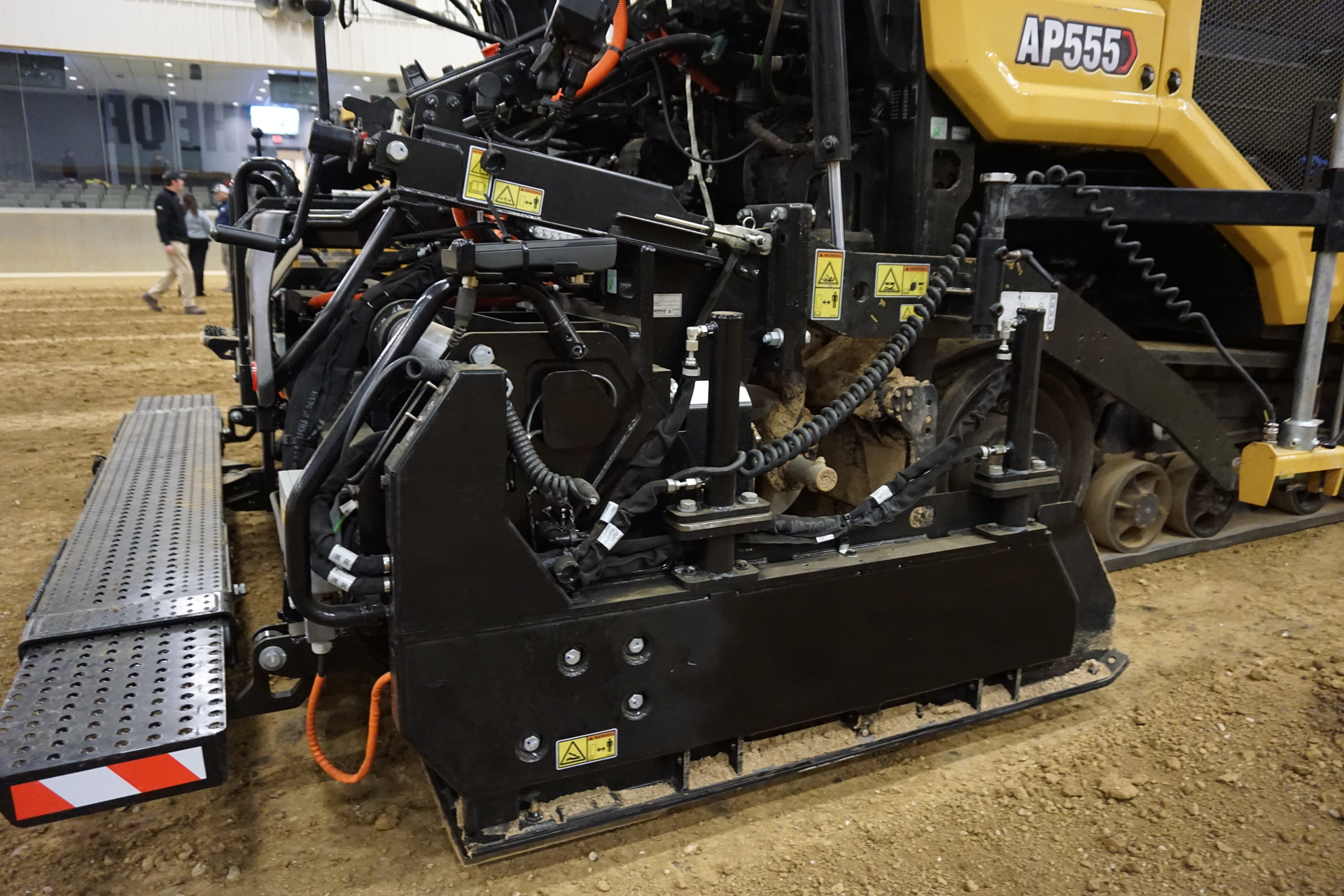
The SE47 V and SE47 FM offer efficient heating and simple adjustments.Equipment WorldRear-mount screeds are typically chosen by 25 percent of customers, and Pennsylvania-based Schlouch Incorporated is one of them. “Over the years our employees have consistently given us the feedback that the rear-mount screed works the best for them,” says Glen Powell, Schlouch paving department coordinator and project manager.
The crew at Schlouch has been field testing the AP455 with the SE47 V for the past year. Here are some of the reasons why they prefer the rear-mount screed:
Full catwalk: “It has a full catwalk. When you run the extensions out, the catwalk extends with it so they can continue to walk out to the end of the extension,” says Powell. This allows for excellent visibility when paving in neighborhoods around stormwater inlets. Durability, rigidity and weight: The setup is also well-suited for high-tolerance applications such as sport courts. “The added weight of the screed behind the machine gives us a nicer mat coming out from behind, gives us a little better compaction right behind the screed and allows us to achieve good results,” says Powell.
A front-mounted system may be a better option for contractors who frequently need to maneuver around obstacles like curbs and light poles. The SE47 FM is equipped with hydraulic extenders in front of the main screed and offers a smaller footprint that reduces handwork at the start of the paving pass. When the paving width is reduced, material is quickly drawn back into the auger chamber.
For contractors requiring wider paving capability, optional extension packages, as well as berm attachments, are available for the SE 47 FM.
Fuel-efficient power
Cat designed the new pavers with an eco-mode feature that pairs with automatic speed control to reduce fuel consumption. In most conditions, the engine can operate at a lower rpm and still deliver the required power to meet performance requirements. If needed, the engine will automatically adjust to a higher engine speed if certain load conditions are met.
The AP400 and AP455 have a 120-horsepower Cat C3.6 engine, and the AP500 and AP555 run on a 148-horsepower Cat C4.4 engine. Both engines meet Tier 4 Final emissions standards.
Enhanced visibility
Operators will immediately appreciate the enhanced visibility into the hopper and unrestricted forward view on these compact machines. The exhaust stack has been integrated into the new hood design and does not extend upward as it does on other Cat paver models. The pavers’ small footprint delivers excellent mobility in tight spaces and low-clearance applications.
“A few of the things we noticed right off the bat was the visibility around this machine,” says Powell. “Most notably, the elimination of a stack in front of the engine compartment. That now allows the operator to really see what’s in front of him, as well as a little bit lower hopper size on the machine. When you’re dumping trucks into the paver, the spotter that stands next to the machine can see in the hopper, see when it’s filled, see when the truck is empty and has better visibility into that area.”
Smooth material flow
Smaller augers deliver smooth material flow at narrow widths, helping contractors achieve quality targets. The 14-inch diameter augers efficiently move material through the auger chamber. Operators can control each material feed sensor when using cut-off shoes or when paving at narrow widths. Simply switch to manual and use the proportional control dial for the feed system.
Did you miss our previous article…
https://constructionosa.org/?p=1024
Toyota Boosts Power, Safety, Looks on 2022 Tundra
Toyota’s slow reveal of its 2022 Tundra has finally culminated in an impressive grand finale that clearly sets the full-size truck apart from previous iterations.
Aside from a bigger truck that’s more refined and includes more driver-assist technologies, the 2022 Tundra is more powerful.
Though fans may lament losing the long-running 5.7-liter V8, they may find solace in a more powerful 3.5-liter V6 that offers 389 horsepower and 479 pound-feet of torque. A hybrid 3.5-liter i-FORCE MAX offers 437 horses and 583 pound-feet of torque. Both variants are bolted to a new 10-speed automatic. For those keeping score — and who doesn’t? — the outgoing 5.7 offers 381 horses and 401 pound-feet of torque.
More power and anew high-strength boxed, steel-ladder frame that the 2022 Tundra shares with the 2022 Land Cruiser offer a jump in max towing from 10,200 pounds on the 2021 model to 12,000 pounds and a max payload capacity of 1,940 pounds, an increase of 210 pounds.
Lackluster fuel economy in the dated 5.7, which comes in at 13 mpg city and 17 highway, will surely be bested by the more fuel-conscious V6s, but we’ll have to wait on final EPA numbers.
A new interior offers creature comforts for driver and passengers alike, including a 14-inch infotainment touchscreen, available panoramic roof, heated and ventilated front seats, rear sunshade, heated steering wheel.
The instrument panel can be optioned with conventional gauges or a 12.3-inch instrument panel display.

2022 Toyota Tundra’s new interior comfortsToyotaA host of new tech features are found throughout Tundra as well, such as towing aids, off-road enhancements, an all-new multimedia system featuring wireless Apple CarPlay and Android Auto and over-the-air updates.
Two different four-door layouts are available, as well as various bed lengths, including a 5.5-foot bed, 6.5-foot bed and an 8.1-foot bed.
Safety first!
Toyota Tundra was the first full-size truck to feature automated emergency braking, and starting with the 2022 model, every Tundra comes standard with Toyota Safety Sense 2.5.
The Pre-Collision System with Pedestrian Detection (PCS with PD) features multiple enhancements, including not only detecting the vehicle ahead but also a pedestrian in low light, bicyclist in daytime, an oncoming vehicle and a pedestrian at intersections when making a turn.
At intersections, the system is designed to detect an oncoming vehicle or pedestrian when performing a left-hand turn and provide audio/visual alerts and automatic braking in certain conditions. Additional PCS functions include emergency steering assist, which is designed to stabilize the driver’s emergency steering maneuvers within their lane while avoiding a pedestrian, bicyclist or vehicle.
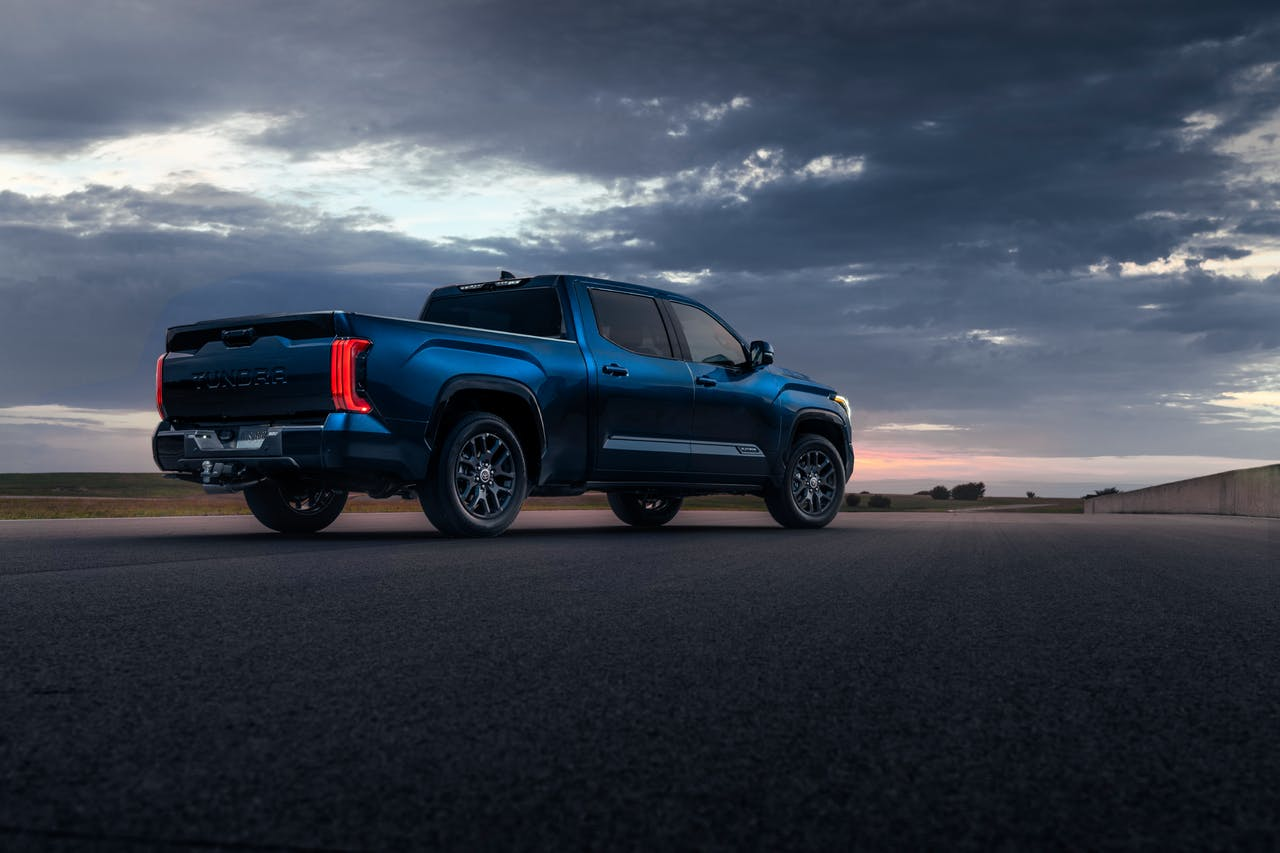
2022 Toyota Tundra boasts a multitude of safety features.ToyotaTundra will be equipped with Dynamic Radar Cruise Control (DRCC). Lane Departure Alert notifies the driver by sound if it senses the vehicle is leaving the lane without engaging a turn signal. When DRCC is set and engaged, Lane Tracing Assist (LTA) provides a slight steering force to help center the vehicle in its lane using visible lane markers or a preceding vehicle.
Automatic High Beams detect preceding or oncoming vehicles and automatically switch between high-beam and low-beam headlights. Road Sign Assist (RSA) is designed to recognize certain road sign information using a forward-facing camera and display it on the multi-information display (MID).
Toyota’s Rear Seat Reminder comes standard on all 2022 Tundras. The feature can note whether a rear door was opened within 10 minutes of the vehicle being turned on, or at any time after the vehicle has been turned on, with a reminder message in the instrument cluster after the engine is turned off, accompanied by multi-tone chimes.
In addition to the TSS 2.5 system, the standard Blind Spot Monitor (BSM) helps detect and warn you of vehicles approaching or positioned in the adjacent lanes. Rear Cross Traffic Alert (RCTA) can offer added peace of mind by helping to detect vehicles approaching from either side while backing out and alerting you with a visual and audible warning. The available Parking Support Brake is designed to implement brake control when there’s a possibility of a collision with a stationary object, approaching vehicle or while parking.
Improved suspension and handling
The 2022 Toyota Tundra’s new multi-link rear suspension drops rear leaf springs for coil springs, which leads to improved ride comfort, stability, handling and increased towing capacity.
The front of the truck gets a new double wishbone suspension, which offers a kingpin offset angle reduction to improve straight-line stability and high-speed driving.
The caster trail gets a 1-inch boost for added stability. To improve cornering, roll steer has been reduced by 25% compared to the benchmarks, and the roll height center has been elevated (152mm compared to 104mm, or roughly 6 inches compared to 4 inches) to reduce body roll, especially when cornering.
The 2022 Tundra gets twin-tube shocks at the front and rear of each truck. The shock absorbers feature triple-oil seals and extended dust covers for added protection and durability. New aluminum forged knuckles are used to cut weight. TRD Off-Road packages offer monotube Bilstein shocks.
TRD Pro grades get 2.5-inch diameter Fox internal bypass shocks that provide a 1.1-inch lift up front. The aluminum-bodied front and rear shocks feature piggyback reservoirs to house additional oil for improved off-road performance. The shocks use a new polytetrafluorethylene-infused (PTFE) Fox shock fluid to improve on-road comfort. This fluid includes microscopic particles infused with the oil to reduce friction.
The all-new Tundra will go on sale in December.
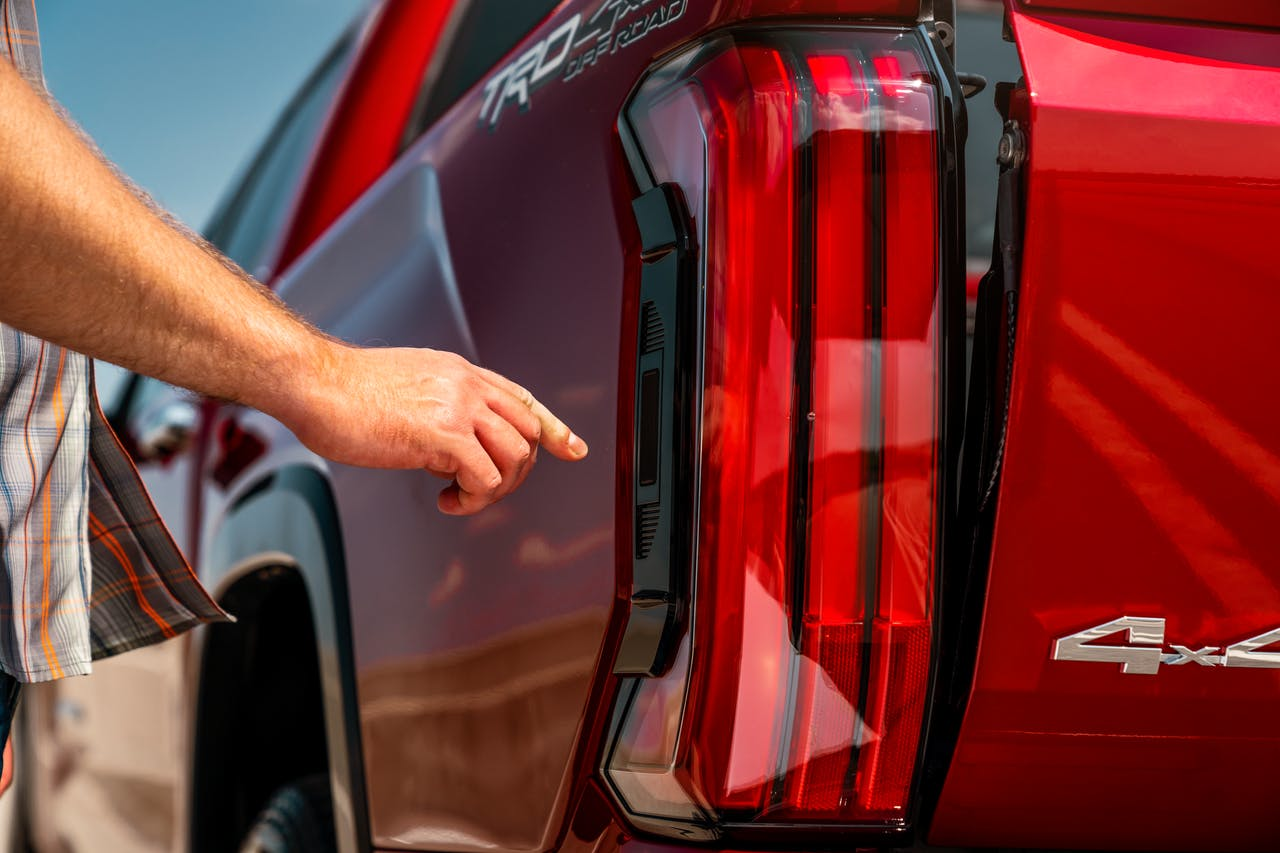
Pressing a button in the rear taillight causes a lighter tailgate for the 2022 Tundra to drop down.Toyota
Did you miss our previous article…
https://constructionosa.org/?p=1019
Chevy’s First Silverado ZR2 Catches Air – and Attention – in Video
So it doesn’t have enough dinosaur DNA to dominate the Ram TRX or Ford Raptor. Nonetheless, Chevy’s first ever Silverado ZR2 is taking flight with more power and suspension at the wheels.
In a video on Chevy’s website, the 2022 Silverado ZR2 is shown going airborne on an off-road course. While it’s hard to say exactly how much air the front tires get — it may around a foot or so — it’s still air, and as far as we know, it marks the first time Chevy has shown one of its half-tons taking on a jump. (To watch the video, scroll to the end of this story.)
While videos in the past have highlighted towing and payload capacities and bed strength, a new focus on truck jumping has emerged as yet another and more dramatic way to show off a truck’s power and muscle. And let’s face it…it just looks like fun.
And all that fun requires some power. The Silverado ZR’s 420-horsepower 6.2-liter V8 delivers 460 pound-feet of torque through a 10-speed transmission. While that’s Chevy’s most powerful Silverado yet, it’s still below the 2021 Raptor, which delivers 450-horsepower and 510 pound-feet torque through a 3.5.-liter V6 mated to a 10-speed transmission. And it’s far below the 2021 Ram TRX, with its soul-stirring 702 horsepower supercharged V8 that churns out 650 pound-feet of torque through an eight-speed ZF automatic.
But I’m not so sure Chevy’s all that bothered about being in third place. While we’ll have to wait until the price is revealed, I’m betting that Chevy will be offering a more affordable, high-performance half-ton that could draw some folks away from the Raptor and TRX. And once it’s in the aftermarket, someone’s going to bolt on a supercharger to help even the score. Look for the 2022 Silverado ZR2 at dealers this spring.
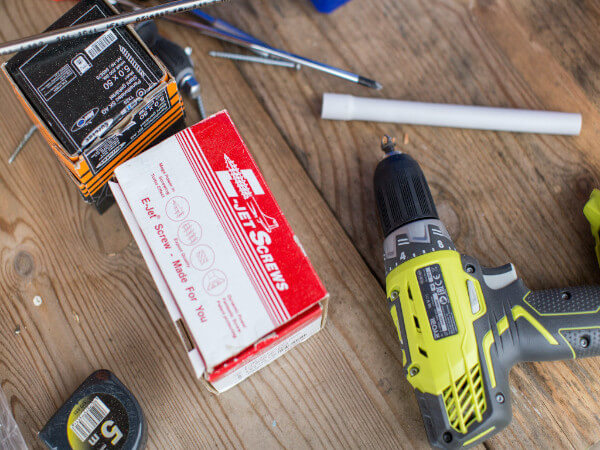
The 6.2-liter V8 delivers 420 horsepower and 460 pound-feet of torque.Chevy
2022 Chevy Silverado ZR2 highlights
· Standard 6.2L V-8 engine, delivering 420 horsepower and 460 pound-feet of torque mated with a 10-speed automatic transmission.
· Silverado-first application of Multimatic 40mm DSSV spool-valve dampers, which feature three separate spool valves to control damping and three connected chambers for fluid flow.
· Uniquely tuned springs that, with the Multimatic dampers, increase maximum front and rear suspension travel, compared to the Silverado Trail Boss.
· Front and rear e-lockers.
· Specific off-road chassis and suspension calibrations, including Terrain Mode, which allows one-pedal rock crawling.
· 18-inch wheels with LT275/70R18 Goodyear Wrangler Territory M/T tires.
· Unique skid plate package.
· New high-approach steel front bumper designed for off-road strength, durability and clearance that enables an improved 31.8-degree approach angle compared to other Silverado off-road models.
· Max payload of 1,440 pounds.
· Max towing 8,900 pounds.
ir-catching video and more photos
Check out this video below of the 2022 Chevy Silverado ZR2 catching air:
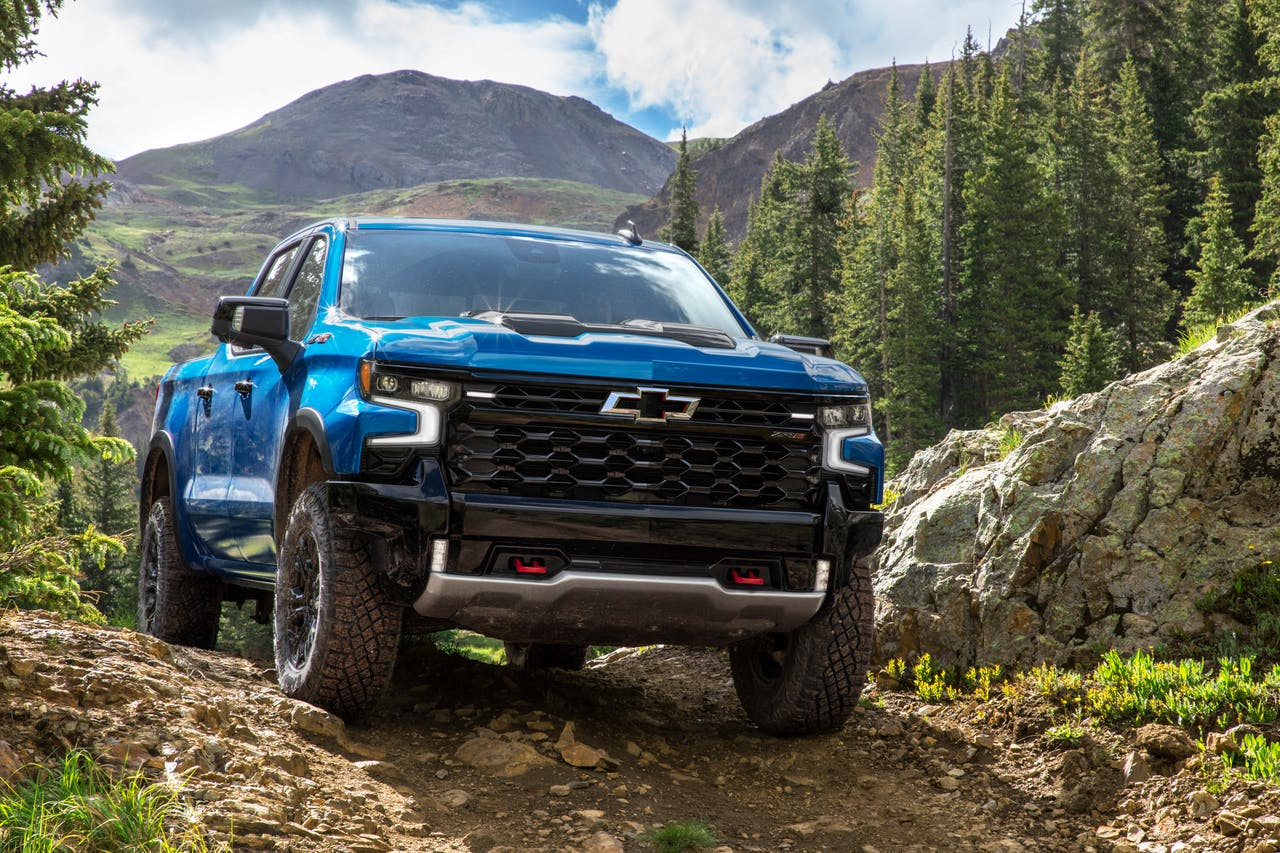
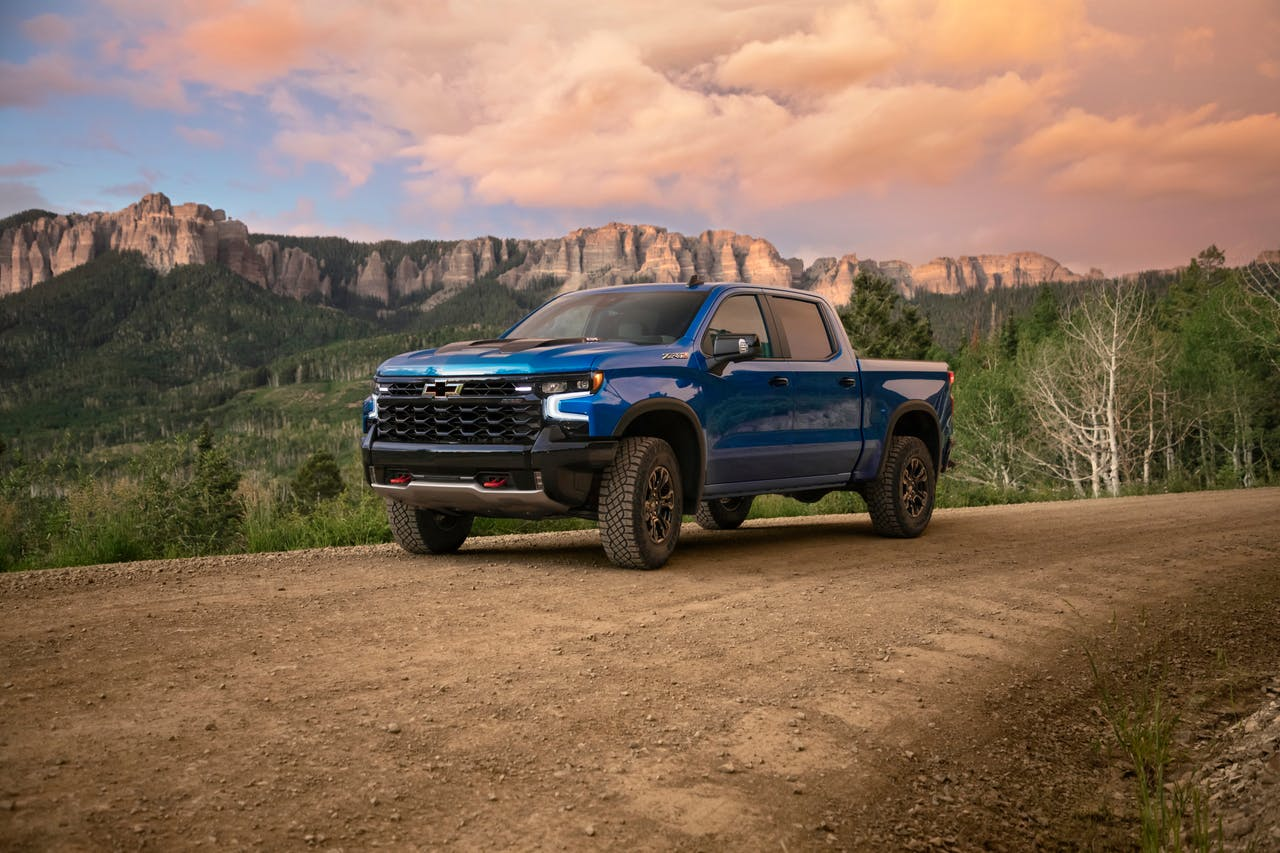
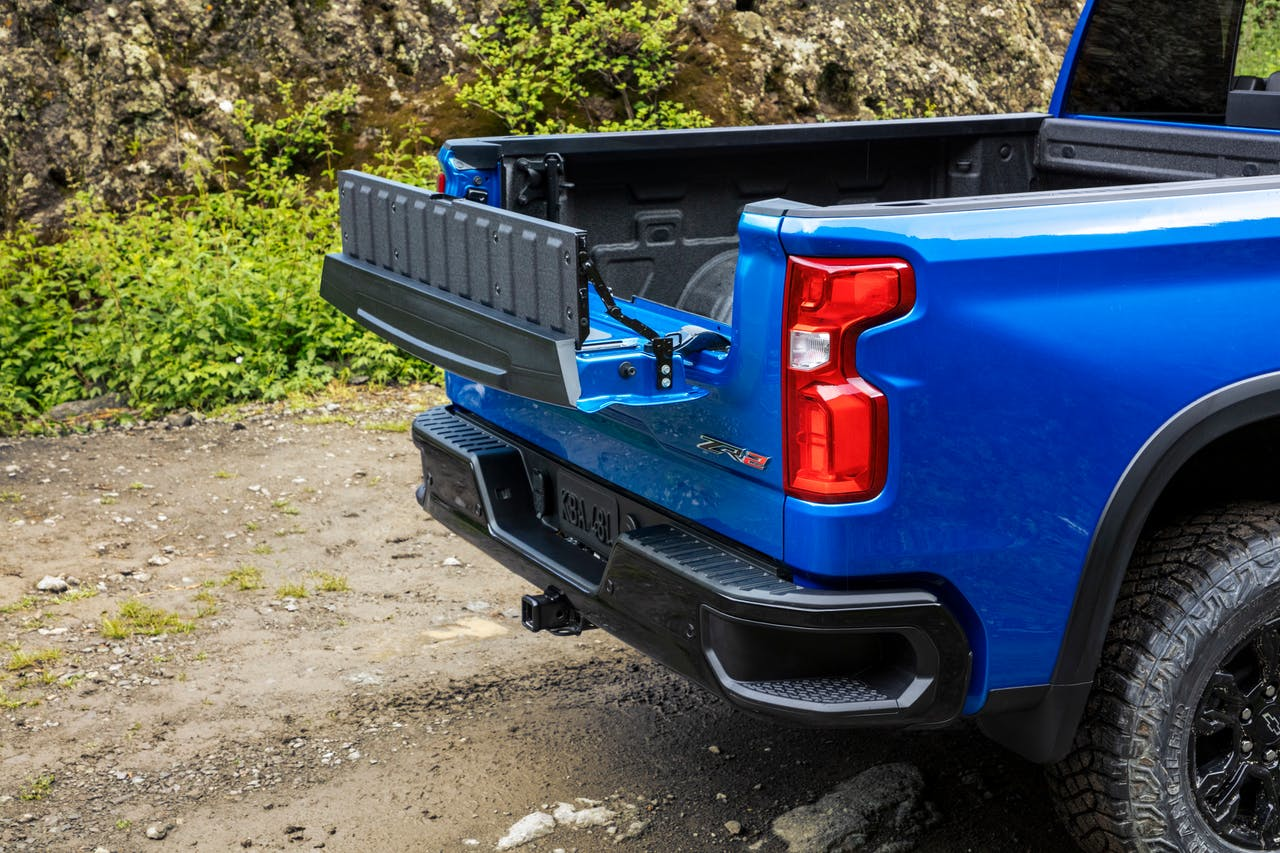

Did you miss our previous article…
https://constructionosa.org/?p=1009
Call 811 Under Fire – Reports Reveal $61 Billion in Waste, Significant Flaws

Has Call 811 left you high and dry, or worse – on the receiving end of a utility strike or near miss? Two recent studies say the national utility locating system is riddled with $61 billion in waste and significant process flaws, including inaccurate line marking and slow response times.
The recent study commissioned by the Infrastructure Protection Coalition took an in-depth look at 811 operations in every state and Washington D.C. and found the waste and excess costs are creating unnecessary hazards for public safety.
The worst offenders – Arkansas, Florida, Georgia, Michigan, Missouri, Wisconsin, and the District of Columbia – account for more than 20 percent of the national waste due to lax policies and procedures. In some instances, states did not even require mandatory reporting of damage to utility lines.
Waste and cost overruns largely were caused by:
Utilities and third-party locators needlessly sent out to locate lines for construction projects that then do not happenPoor instructions given to locators, causing wasted time or additional workLocate marks destroyed by construction and then needing to be reinstalled Contractor wait time when location efforts exceed the legal notice period
A separate survey conducted by the Associated General Contractors of America had similarly alarming results. Ninety-nine percent of contractors surveyed were familiar with the 811 system and the requirements before excavating, but 73 percent reported weaknesses in the 811 processes.
Respondents cited the lack of accurate utility locating by utility owners and operators as the biggest problem. In addition, 56 percent of firms with concerns about the 811 system said slow utility owner and operator response times were a significant weakness.
The two largest causes of utility line strikes and near misses are unmarked or mismarked utility lines (53 percent) and the failure of utility firms to properly mark their lines within the required amount of time after 811 has been contacted (25 percent).
Many contractors reported being unfairly blamed for damages even after contacting 811. Indeed, the survey showed nearly two-thirds of contractors reported receiving a claim from a utility owner and operator for damage to a line the construction firm was not responsible for damaging.
Industry Leaders Sound Off
Industry association leaders voiced their disappointment in the utility location system and the dangerous position it puts contractors and community members in.
“Construction firms are doing their part to avoid hitting utility lines, but the current 811 system appears to be badly flawed,” says AGC CEO Stephen E. Sandherr. “Fixing the 811 system will go a long way in protecting the safety of construction crews and the communities near these utility lines.”
“Ultimately, ratepayers are picking up the tab for this waste and bearing the public safety risk. Some states have figured out how to work this system safely and efficiently, and there’s no reason others cannot do the same,” says Power & Communication Contractors Association CEO and Infrastructure Protection coalition member Tim Wagner.
The studies come at a critical time for the nation’s infrastructure, as trillions of dollars will be funneled into new projects with the passage of the infrastructure bill. That means tens of thousands of miles of new highway, bridge, road, broadband, and water and sewer infrastructure construction, all of which will be near existing underground utilities.
Fixing the Broken System
So, what’s the solution? An overwhelming majority of AGC survey respondents (98 percent) want contractor representation on local 811 center boards of directors. Many respondents also urged all utility firms to be required to participate in the 811 process. Ninety-one percent of firms added they already conduct training with their employees on how to use, and comply with, local 811 requirements.
The Infrastructure Protection Coalition study found excessive costs and risks could be reduced if states with the worst records adopt more effective practices and procedures already in use in other parts of the country.
The Infrastructure Protection Coalition is a group of associations representing broadband, electric, natural gas, pipeline, transportation, sewer, and water industries. They are regular users and stakeholders of the 811 system.
Associated General Contractors of America represents more than 27,000 construction contractors and industry-related companies. The 811 survey was conducted in late August and September. Five hundred twenty construction firms responded to the survey, representing virtually every type of excavation activity in the industry.
Did you miss our previous article…
https://constructionosa.org/?p=1000
West Side Tractor Sales Named Big Iron Dealer of the Year
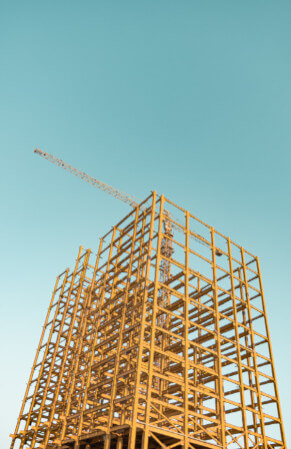
West Side Tractor Sales, headquartered in Lisle, Illinois, has been named the 2021 Equipment World Big Iron Dealer of the Year.
“The fact that West Side was nominated by a customer is no surprise when you examine their absolute commitment to customer service,” says Jordanne Waldschmidt, Equipment World chief editor. “Our editorial team was impressed with how West Side’s family leadership stays ahead of changing customer needs and yet remains focused on developing deep relationships.”
Established in 1962 by Rich and Mary Benck, West Side now serves as the John Deere dealer in more than 80 counties with 11 locations in Illinois, Indiana and Michigan. Six second- and third-generation owners – all deeply ingrained in the company’s day-to-day operations – now carry on the legacy: children Steve, Diane and Tom Benck and grandchildren Brian Benck, Jen Snow and Lauren Coffaro.
Equipment World will profile West Side in a coming article, detailing how its customer service focus has translated into its new headquarters and shop design, how it has developed technology solutions and positioned itself against supply chain disruptions.
Now in its fourth year, the Big Iron Dealer of the Year award recognizes dealers for excellence in meeting customer needs, employing technology and addressing parts and service requirements.
West Side is one of four dealers named finalists in the 2021 Big Iron Dealer of the Year Award. The following three finalists will also be featured in profiles throughout the coming weeks:
In 1926, 4Rivers Equipment began as Romer Mercantile, a small John Deere agriculture equipment dealer in Holly, Colorado. Through partnership and acquisition, the company has expanded to 18 locations covering Colorado, Texas, New Mexico and Wyoming. The company, still owned by the Romer family, now features agriculture and construction locations and has more than 400 employees. Key brands include John Deere, Wirtgen and Topcon.
Founded in 1983 with 28 employees, RECO Equipment now covers Ohio, Pennsylvania, West Virginia, Indiana, Michigan, North Carolina, Kentucky, Tennessee and Florida. Brands include Bobcat (including Bobcat of Pittsburgh), Allied, Hyundai, Hitachi Loaders America, LBX Excavators, LaBounty, Liebherr and Terex. The company now has more than 200 employees. The company is owned by partners Paul DiTullio, president, and Josh Gasber, vice president.
Butler Machinery started in 1955 when founder Francis J. Butler, a contractor, was selected to be a Caterpillar dealer. The company has since expanded to 18 locations across North Dakota, South Dakota and Nebraska with 850 associates. Twylah (Butler) Blotsky serves as the company’s president, the second person from the third generation of the Butler family to lead the company.
Did you miss our previous article…
https://constructionosa.org/?p=994
Demolish 8-Story Buildings with New Cat 340 UHD Excavator
Cat has unveiled a new demolition excavator, the Cat 340 UHD – as in, Ultra High Demolition.
The new tall boy boasts a pin height 13 percent higher than the 340F UHD, giving it the ability to perform demolition on buildings as high as eight stories. Another plus: the 340 UHD has a coupling system that enables you to switch between two UHD fronts and the shorter retrofit booms and sticks with no special tools in as little as 15 minutes.
“This is a purpose-built, dedicated demolition machine,” says James Cole, product application specialist. “We are not just throwing a long front on a standard excavator. It has a reinforced frame, a heavier counterweight and the best working weight in the industry in its size class.”
Cat also spent time engineering the new demolition excavator to be easier to transport. A hydraulically actuated variable gauge undercarriage extends from 9 feet 10 inches in the transport mode to 13 feet 4 inches for stability in the working configuration. And an optional one-piece cradle for the boom can be used to reduce the UHD boom transport height to less than 9 feet 10 inches.
Multiple Boom, Stick options
The new 340 UHD allows for the sticks to be configured with Cat couplers to optimize machine versatility and productivity. There are two front options available:
The 72-foot 2-inch front offers a maximum 8,160-pound capacity (3.7 tons) at stick pin and maximum horizontal reach of 44 feet 5 inches at stick nose over the front and side of the machine. Working with a 7,280-pound maximum weight at stick pin, the 82-foot front offers a 43-foot 9-inch maximum reach at stick nose over the front and side of the machine. It matches the Cat MP332 and MP324 multi-processors.
Three stick options are available in lengths of 9 feet 2 inches, 10 feet 6 inches, and 12 feet 10 inches. The maximum digging depth for the machine is 24 feet 3 inches.
Hydraulic Quick Connect
The UHD’s hydraulic boom lines are quickly connected and disconnected by hand and without special tools. Contractors can choose between one- or two-piece boom options for high-productivity truck loading or low-level demolition work.
Standard Cat Payload provides on-the-go weighing and real-time estimates of the payload, so operators can achieve precise load targets when working with the one-piece retrofit boom.
The power for this demolition excavator comes from a Cat C9.3 engine rated at 311 horsepower that can run on diesel or B20 biodiesel. Three power modes — power, smart and eco — match the engine and hydraulic output to job needs to lower fuel consumption. A new high-efficiency hydraulic reversing fan cools the engine on demand to also help with fuel efficiency.

Safety alerts warn the operator when the machine is getting close to its operating limits.CaterpillarSafety alerts
The new 10-inch touchscreen monitor in the 340 UHD displays Cat’s active stability monitoring system. This continuously informs operators if the work tool is positioned within the safe working range and provides audible and visual warning alerts when approaching the stability limit.
Cat increased the seat size by 5 percent and included a left-hand tilt-up console for easier entry and exit. Customized, programmable settings and joystick button controls can be stored on the monitor based on operator ID.
No neck strain
A 30-degree tilt-up cab gives you a comfortable sight line without neck strain when working on tall structures and buildings. And to better help you see that work tool eight stories up in the air, the UHD front is work-tool camera ready.
Cat E-fence and Cat Grade with 2D automatically guide depth, slope and horizontal distance to grade through the monitor. And the machine automatically compensates for excavator pitch and roll caused by sloping ground conditions through use of GPS and GLONASS systems.
Quick Specs
Engine: Cat C9.3BNet power – ISO 14396: 311 hpOperating weight: 122,400 lbs. (2); 130,600 lbs. (1)Max. weight at stick nose: 7,289 lbs. (2); 8,160 lbs. (1)Max. pin height at stick nose: 82′ (2); 72’ 2” (1)Max. digging depth (3): 24’ 3”
*Net power advertised is the power available at the flywheel when the engine is equipped with fan at minimum speed, air intake system, exhaust system, and alternator, and tested per the specified standard in effect at the time of manufacture.
22-m UHD front25-m UHD front1-piece Retrofit boom bent and R 12’10” (3.9 m) stick
Did you miss our previous article…
https://constructionosa.org/?p=991
Finding the Right Finance Partner for Your Construction Business
Financing companies talk about partnering with clients. They all say it matters. They all say they’re really good at forming solid relationships. But does finding and selecting the right financing partner really matter to construction businesses?
The short answer is a resounding “yes.” Selecting the right financing partner can make or break a business.
The right financing partner will have the resources and expertise in construction equipment the business needs. That partner will integrate into and be committed to the success of their client. This isn’t just for altruistic reasons; when both the client and partner realize success, they both achieve more and grow more.
5 points to consider when choosing a financing partner
Choosing the right financing partner can make a measurable difference in the life of your company. Every business and every financing company is different, but the points below are good indications that you are on the right track in choosing an effective partner.
It’s not all about pricing. A true partner is in it for the long term – literally, in good times and in bad – and is looking for a long-run relationship rather than a one-time transaction. Moreover, you typically will be working with a finance company for a long time – hopefully, for the life of your business. For that reason, you need a relationship that’s more than transactional.It is about information. Good partners will have in-depth questions about your business, your equipment, your goals and your process. They will want to meet in person, in a Zoom meeting and/or over the phone – on an ongoing basis. Keeping up-to-date with you and your business should be a commitment you hear early on from any financing company you meet with.They will push to talk with the right people. A partner that wants to understand your business will work to make sure they meet with the people within your organization who know your processes and who make decisions. They will spend time learning your business, while valuing your time and their own.The average tenure of a business relationship with clients is measured in years. A partner that approaches business from a long-term perspective, versus one that is based on volume and quotas, often works in the best interest of not only itself, but its clients. Ask about the financing partner’s average tenure with clients. Good ones may be three times the industry mean.They won’t be afraid to call out problems or concerns, and challenge decisions. Remember that a real partner is as committed to your success as you are. It’s not about being a “yes man.” They want to learn about your business challenges and then identify financing solutions that can help solve said challenges. Financing is not a one-size-fits-all product; make sure any financing company is tailoring its offerings to meet your needs.
The consultative approach
Companies may hear about financing companies taking a “consultative approach.” But what does that really mean? And is it the best approach?
The consultative approach to business engagement refers to the commitment to learning about clients’ businesses and business models before ever suggesting a financing method or program. Instead of a commodity solution, a consultative approach will result in recommendations that help you achieve your short-term as well as long-term goals.
The approach also works from a position of expertise. A consultant, by nature, is someone with expertise and experience in their field. Working with a financing partner who has experience working in the construction industry, and/or running, a business means they can think like you do. It also means they can think ahead and know the likely challenges you will face. That external perspective – a hallmark of the consultative approach – contributes important knowledge that can help a business stay on track or pivot when needed.
As the financing partner becomes more and more knowledgeable about your company, they can become an extension of your business. In return, you will gain more and more confidence that they’ll deliver what and when they say.
Partner resources
Most of the time, a financing partner will be able to provide financing solutions for your business. However, there are times when a company needs other resources. A good financing partner can be invaluable in these situations, which could include:
Personnel, experts: Perhaps what a business really needs is an interim CFO, a CPA with international experience or a strategic advisory board. A good partner with deep connections in the industry will be able to help with strong referrals and connections.Customized financing programs: Many financing companies will work with generic rates for different industries. While that can be a good place to start, a partner will determine what’s really right for your business and suggested a specific, often-customized, program.Business financing: As economies work to recover from the pandemic, many businesses are finding they need different and additional help to fund the growth they’re experiencing from pent-up demand. A strong financing partner could analyze and provide alternatives, whether it’s a line of credit supported by account receivables, equipment refinance or funding the ramp-up of inventory.
Often, the partner will be able to identify a company’s real needs, looking at a situation through the lens of experience and expertise. Other times, the business will know its needs, but not realize that a financing partner – versus a commodity lender or bank – can help. In times like those, working with a knowledgeable partner makes running and growing the business much easier.
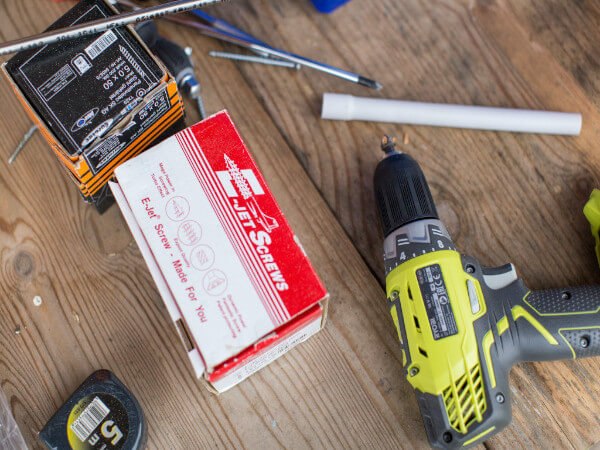
Ivan Franklin, vice president – construction, vendor services, Mitsubishi HC Capital AmericaMitsubishi HC Capital AmericaShared vision, shared success
Solid financing partners are committed to a shared vision and shared success, and to building trust. Any of us who can surround ourselves with people as committed to our success should count ourselves as fortunate. In choosing the right financing partner, a construction business will find additional expertise, resources and flexibility to grow their business efficiently and effectively.
Ivan Franklin is Vice President – Construction, Vendor Services, at Mitsubishi HC Capital America, a provider of financing solutions that are tailor-made for the construction industry.
Genie’s New GTH-1056 Lifts More for Less Cost
How do you make a popular design even better? Genie set out three goals to meet with its new GTH-1056 telehandler. It had to deliver a lower cost of ownership, more lift capacity and a stronger design.
Based on the features found in the older GTH-636 and GTH-846 models, the GTH-1056 offers a boom and chassis that is 30 percent stronger than previous models. The boom’s mid-point pivot uses a single lift cylinder combined with a wider, stiffer horsehead to efficiently transfer weight in high-stress applications, such as handling pipe or suspended loads.
The GTH-1056 lifts up to 5,000 pounds to a height of 56 feet 7 inches and 3,000 pounds at a maximum reach of 42 feet. A 120-horsepower Deutz engine and four-speed transmission serve as the muscle behind this machine. The combo gives you 23,110 pounds of drawbar pull and a top speed of 18 mph.
There’s also a 74-horsepower Deutz engine option with a three-speed powershift transmission or continuously variable transmission. According to the company, the 74-horsepower version delivers performance on par with the larger engine but offers a lower cost and better fuel efficiency. And because it runs without the need for regular refills of diesel exhaust fluid, the 74-horsepower version reduces maintenance time.

Large tread bars in the middle add durability and aggressive tread blocks on the edges improve traction with Genie’s A/T hybrid tires.GenieTo keep you moving through wet or muddy soil conditions, the GTH-1056 delivers power to the wheels through limited slip differentials on both the front and rear axles that automatically deliver torque to the wheels that are slipping.
Tires are always a big part of the operating costs of any machine. To help keep this cost low, Genie developed a new Enduro A/T hybrid tread design for the GTH-1056. The tread pattern on the tire combines the best characteristics of rock lug tires and conventional rough-terrain tires. A wide center bar resists wear on hard surfaces, and self-cleaning outer lugs power through soft, muddy ground without becoming clogged. According to the company, its Enduro A/T tires also provide one-third longer wear before replacement is needed.
Improved hose routing, chain retention, slide-in wear pads and hydraulics-free axles also reduce maintenance costs.